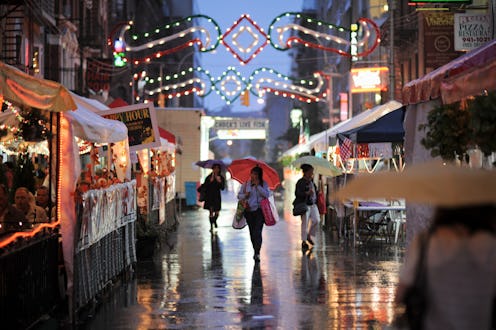
This week is International Anti-Street Harassment Week, so it's only fitting that Hollaback! nd Cornell University just unveiled new research on street harassment in the United States. Although I'm sure plenty of us will be unsurprised by the results of the Hollaback! Street Harassment Survey, the figures are still sobering all the same. Indeed, even the organization's Deputy Director, Debjani Roy, was taken aback: Said Roy in a press release, “We hear stories of street harassment every day — and even so this data shocked us. The prevalence of street harassment in the U.S. is profound. We can no longer dismiss street harassment as a 'little problem' — this is everyone's problem.” Hear, hear.
The first of two installments, the data released by Hollaback! today focuses on street harassment in the United States. The second installment, which will be released in May, will include a cross-cultural analysis of street harassment from 42 cities around the world. The survey was administered by Hollaback! site leaders between October 15 and December 15, 2014; of the 16,607 total respondents, 4,872 lived in the US.
It's worth noting that the sample, sizable as it is, was not randomly selected; as such — and the researchers are careful to make this point in their report — we need to be careful about the conclusions we draw from it. Given that the respondents are not necessarily representative of the entire population, for example, we can't start making generalizations about said population — but we can say say that among female respondents under 40 in the United States, we found X, Y, and Z.
So: For these 4,872 American women under the age of 40, here are the takeaways — and even though the takeaways are limited, if they don't convinced you that street harassment is a problem, then nothing will:
1. Street harassment starts young.
A whopping 85 percent of respondents reported experiencing harassment for the first time before the age of 17. 85 percent. Moreover, 97.7 percent of respondents reported their first instants of harassment as occurring before the age of 21. That's bonkers. Here's the full breakdown by age:
- 11.6 percent reported first experiencing harassment when they were under the age of 10.
- 23.7 percent reported it as being when they were 11 to 12 years old.
- 31.4 percent reported it as being when they were 13 to 14 years old.
- 18.2 percent reported it as being when they were 15 to 16 years old.
- 12.8 percent reported it as being when they were 17 to 20 years old.
- 1.9 percent reported it as being when they were 21 to 24 years old.
- 0.4 percent reported it as being when they were over 25.
2. Street harassment happens all over the place.
Not only that, but consider all this: 42 percent said they'd been verbally harassed in a well-lit area over the past year, while 29.8 percent said they'd been verbally harassed in a poorly lit area. Similarly, 49.5 percent said they'd been verbally harassed while dressed “down” or casually, while 37.3 percent said it had happened while they were dressed up. Respondents were also more likely to get groped when surrounded by other people (which I suspect is because the culprits figured they'd be less likely to get caught): 25.2 percent said they'd been groped or fondled while they were around others, while 4.9 percent said it had happened when they were isolated. And almost all harassment behavior — nonverbal, verbal, following, groping, or exposing — is just as likely to occur during the day as it is at night. So all those stereotypes about how “she was asking for it because she was wearing a skirt” or “she was asking for it because she was walking in a poorly lit area?” They're not true. At all. This is why victim blaming is bullshit.
3. Street harassment makes women change their behavior, even if their behavior isn't what needs changing.
Here's just a small selection of the sorts of changes harassment caused the respondents to make:
- 54.5 percent said that experiences with harassment made them not go to a social outing, and 69.8 percent said it had made them avoid going out at night.
- 85.6 percent said harassment had made them take a different route home or to their destination, and 72.8 percent said it had made them choose to take a different type of transportation (calling a cab instead of taking the bus, for example).
- 66.2 percent said harassment had made them change what they were wearing.
- 63.4 percent said it had made them avoid socializing or interacting with someone else.
4. Street harassment is not flattering.
Only three percent of respondents said they found street harassment flattering. So let's stop pretending it's a compliment.
For more, check out Hollaback!'s full 2015 Street Harassment Survey results.
Images: dalioPhoto/Flickr; karendesuyo/Instagram